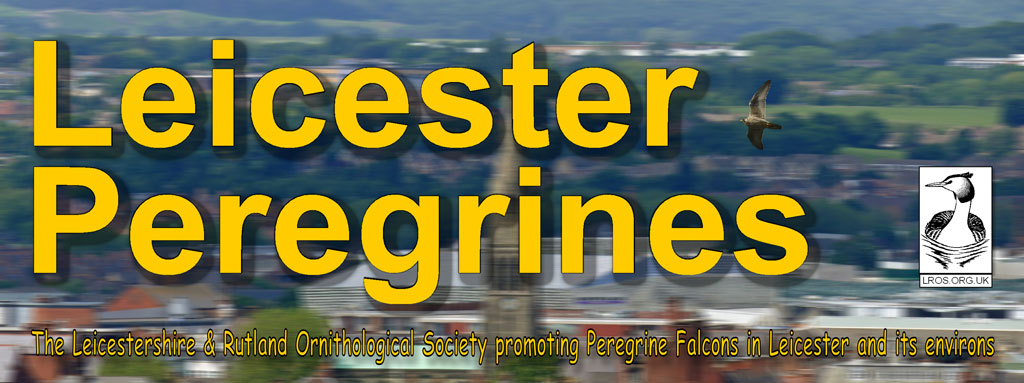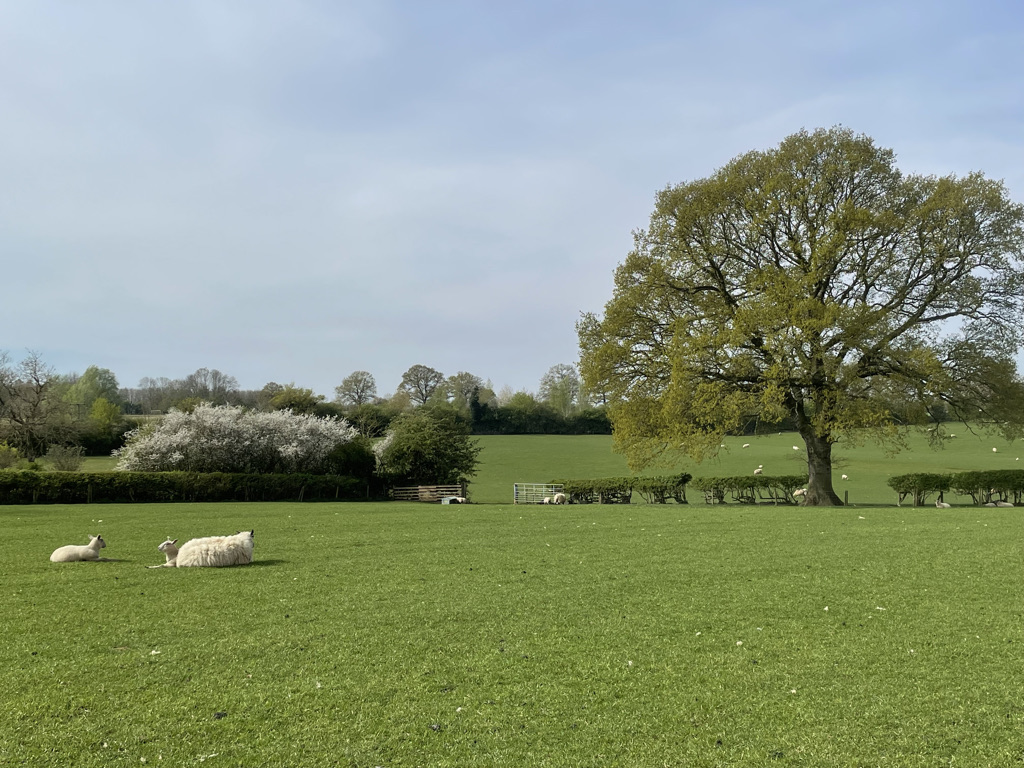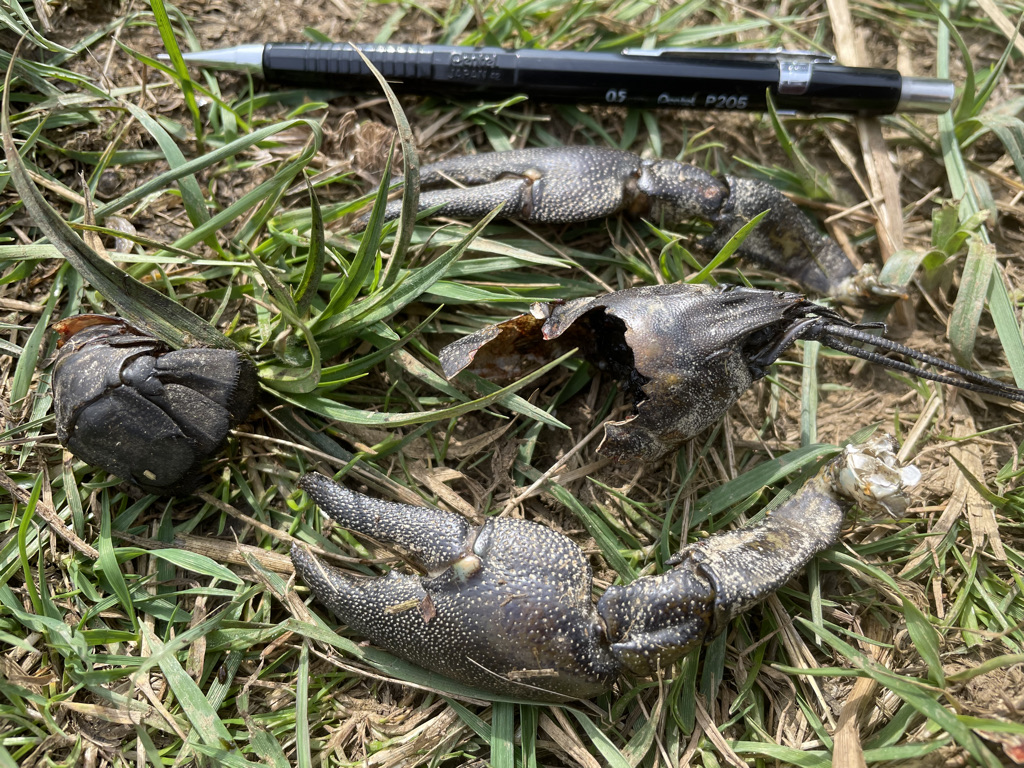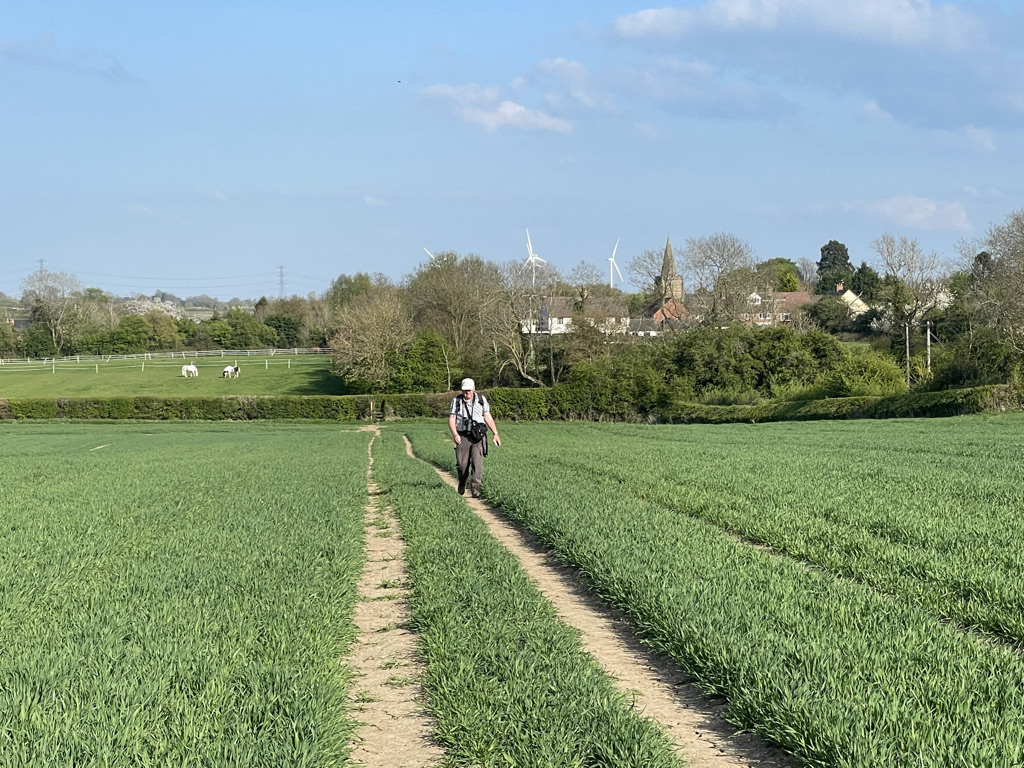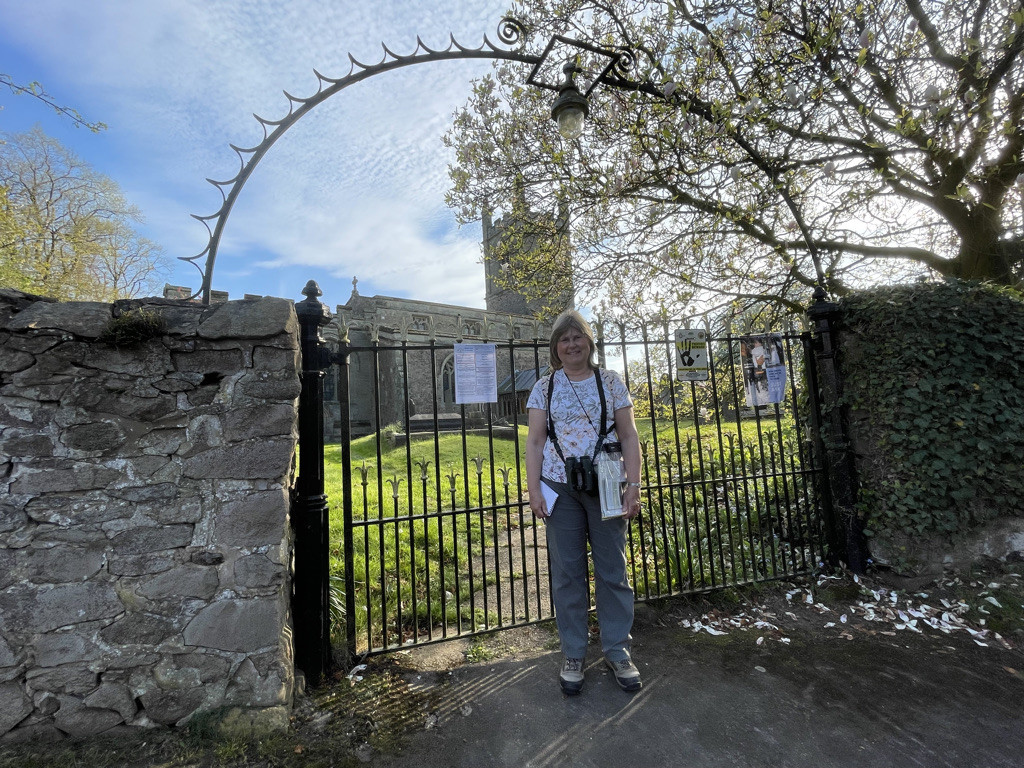Birding the Leicestershire Round
Section 7: Bruntingthorpe to Frolesworth Wednesday 20th April 2022
Participants: Jim and Sue
Exiting Bruntingthorpe village to the by now familiar chorus of Blackbird, Greenfinch, Goldfinch and House Sparrow, it was a pleasant, easy walk to Peatling Magna. We crossed lush pastureland at first, awash with bleating lambs and attendant ewes. Here, the urban birdsong gave way to Chaffinch, Wren, Linnet, Chiffchaff and Blackcap amongst hedgerows bursting with fresh green leaves of Hawthorn and the heady scent of Blackthorn blossom. Further along, our path followed a small stream, where butterflies including Orange-tip, Small Tortoishell, Peacock and Small White danced amongst a mix of Lesser Celandine, Cuckoo Flower, Dandelion and White Dead-nettle, providing a colourful corridor through the extensive wheat fields. A Buzzard sailed lazily by, Skylark were in full song and it wasn’t long before Whitethroat and Reed Bunting were added to our list for the day.
The banks of the stream were dotted with numerous holes, the size of which suggested the burrows of either Brown Rat or Water Vole, but the occupants were not encountered, despite a thorough scan of the area. A few metres on gave us fine views of a Brown Hare and then to another intriguing find – that of a half-eaten Signal Crayfish on the path: the recent meal of an Otter or Mink perhaps? A Great Spotted Woodpecker drummed persistently in the distance as we walked on slowly, tracking another Buzzard patrolling over its large nest in an old Oak. Every now and then, the head of the incubating bird could be seen above the rim, but it was too distant to establish whether there were any chicks at this stage.
The route between Peatling Magna and Willoughby Waterleys lead us through more pasture and mixed hedgerows. It was here that we encountered the first Lesser Whitethroat of the Round, singing and song-flighting from the bushes. As our path ascended slightly into the village, we caught sight of no less than eight Buzzard circling together high above us on the thermals, while nearer the ground, several Crows were busy mobbing two Raven, attempting to chase them off their territory. The somersaulting manoeuvres of these impressive corvids kept us entertained for a while, before we traversed the last field to Willoughby, accidentally disturbing a pair of Red-legged Partridge as we went. A small pond hosted Canada Goose and Moorhen and we added Brimstone and Peacock to our butterfly list for the day. Wheezing Greenfinch seemed to be everywhere as we walked past the picturesque little church and out across the arable fields towards Ashby Magna. Dunnock, Long-tailed Tit, Stock Dove and Yellowhammer were noted along this stretch before we arrived at the lakes of Holy Farm Fishery. We paused here for lunch in delightful sunshine, overlooking the water. A pair of Mallard dabbled at the waters edge, two Canada Geese and a Moorhen patrolled up and down and a female Mallard with seven chicks were doing their utmost to negotiate the fishermen’s lines as they were repeatedly cast into the water. Suitably refreshed, we resumed our walk which took us along a small stream beside the M1 before crossing the motorway towards Dunton Bassett. The stream itself was largely concealed by overhanging hedgerow, but its deeply shaded banks were colonised by an amazing variety of ferns, Hart’s Tongue being the most abundant. On the approach to the village across a vast field of improved grassland, Skylark song mingled with the yaffles of Green Woodpecker and the calls of Reed Bunting. Holly Blue butterflies on flowering Laurel were noted close to the houses, together with Small Tortoiseshell and Peacock.
On the western side of Dunton Bassett, a crow pecking at something on the ground by a small stream caught our attention. On taking off, its quarry was revealed as a Frog, which it took back to a nearby tree to consume. The path continued across rough pasture, dotted with young Hawthorn trees. Here, Linnet was the most numerous bird as we descended to Stemborough Mill Pond – a body of water initially promising, but which only supported five Canada Geese and two Coot. At Valley View Farm, Song Thrush boosted our list and another Lesser Whitethroat was heard near to Stemborough Lane Farm. Emerging onto the narrow lane towards Leire, we came across a beautiful Fox, sitting in the middle of a field, its bright russet fur glowing in the sunshine. As we watched, it traversed the field several times hunting for food, before vanishing into the hedgerow. Beyond the lane, we crossed a disused railway line and rose gradually through wheat fields into ridge and furrow pasture, studded with dandelions. The route continued around the perimeter of a large wheat field bordered by a wide strip of set-aside. We approached the road to Frolesworth, our final destination of this section, to the call of another Whitethroat, more Skylark, Swallow and House Sparrow. At the eleventh hour, we looked out across the valley to a small fishing lake and a distant bird came into view, its dark wings contrasting sharply with pure white underparts. As it flew closer, we soon realised that we had secured another new bird for the Round – a single Lapwing!
The Plough and Harrow Pub in Frolesworth sadly closed down some time ago, so we doubled back to Leire where we were welcomed warmly by the staff of the Queens Arms for an enjoyable meal before the drive back home.
